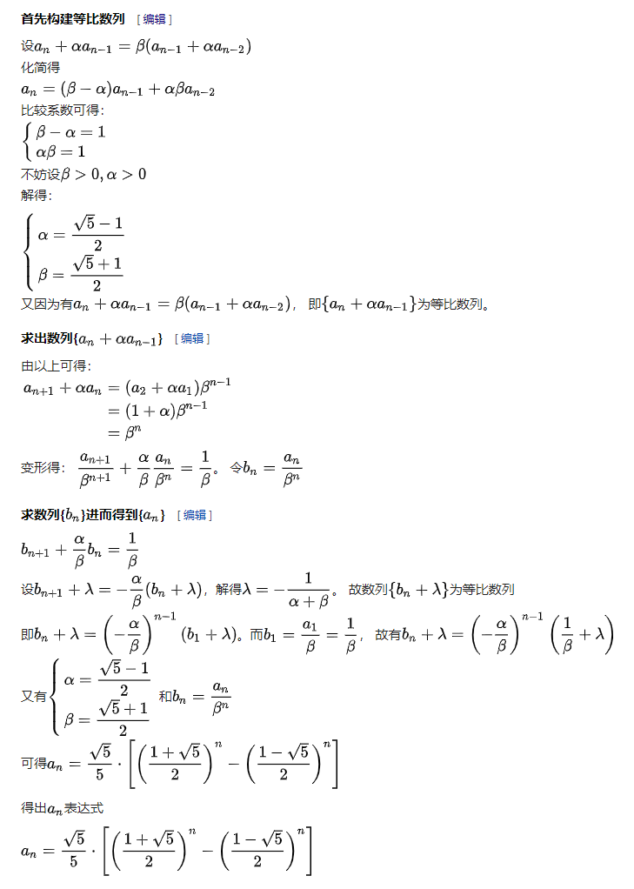有趣的斐波那契数列
在尝试刷动态规划相关题目时,从leetcode拿简单题开始切入,便遇到了一个有趣的题目和解答方案,让我耳目一新。
题目: 爬楼梯题目, 是个最基础的斐波那契数列相关题目,最简单的解法,无非就是递归。
1
2
3
4
5
6
7
| class Solution {
public int climbStairs(int n) {
if(n == 1) return 1;
if(n == 2) return 2;
return climbStairs(n - 1) + climbStairs (n - 2);
}
}
|
提交时发现超时了,因为递归会消耗很多堆栈资源,所以尝试使用更 朴素 的方式。
1
2
3
4
5
6
7
8
9
10
11
12
13
14
15
16
17
| class Solution {
public int climbStairs(int n) {
if(n == 0) return 0;
if(n == 1) return 1;
if(n == 2) return 2;
int one = 1;
int two = 2;
int three = 0;
for (int i = 3; i <= n; i++) {
three = one + two;
one = two;
two = three;
}
return three;
}
}
|
链接 https://leetcode-cn.com/submissions/detail/21591778/
这回提交后通过了。但是,我有看到执行用时更短的提交用例,查看源码发现,愣是看!不!懂!
1
2
3
4
5
6
7
| class Solution {
public int climbStairs(int n) {
double sqrt_5 = Math.sqrt(5);
double fib_n = Math.pow((1+sqrt_5)/2, n + 1) - Math.pow((1-sqrt_5)/2, n + 1);
return (int)(fib_n / sqrt_5);
}
}
|
不知道其根号五是从何而来,又有何用处。
查阅wikipedia https://zh.wikipedia.org/wiki/斐波那契数列, 找到了我想要的答案:

这一套花哨的操作,只用到了高中数学的知识。成功算出了 $a_n$ 的表达式。
对着表达式:

现在再看其源码便能看出端倪。
1
2
3
4
5
6
7
| class Solution {
public int climbStairs(int n) {
double sqrt_5 = Math.sqrt(5);
double fib_n = Math.pow((1+sqrt_5)/2, n + 1) - Math.pow((1-sqrt_5)/2, n + 1);
return (int)(fib_n / sqrt_5);
}
}
|
这无非是直接套入公式,算出n对应的斐波那契值。
所以,编程实现斐波那契,不一定非要用递归循环等方式,还可以直接使用公式算出其对应的值(这样时间复杂度就降到了O(1))。数学思想才是超脱于编程实现的存在。
